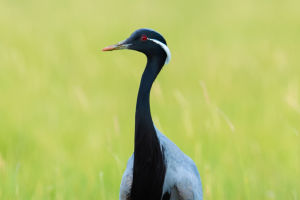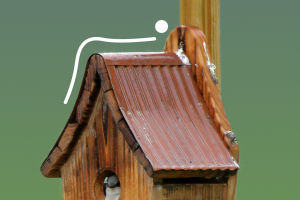The Great Peacock butterfly is the largest butterfly in Europe, wearing a maroon velvet coat with a white fur tie. The wings are covered in grey and white spots, with a pale white zigzag line running through them, surrounded by a smoky grey-white perimeter and a circular spot in the center of the wing.
Great peacock butterflies have an unusual vision and can perceive light that is not perceived by the normal retina. Male Great Peacock butterflies have broad tentacles that act as detectors.
The pupils of the great peacock butterfly shimmer in a rainbow of black, white, maroon, and cockle-red colors. They live on a diet of apricot leaves. The great peacock butterfly's sole purpose in life is to find a mate, and for this purpose, they have inherited a very special gift: no matter how far the journey, how dark the road, or how many obstacles there are on the way, it will always find the opposite sex.
The beauty of this butterfly is innate. Even when they were caterpillars, they already had people marveling at their beauty. A ring of black cilia, like a string of lime green pearls set on this tiny creature's body, sets them off in a brighter way. Before they metamorphose into beautiful butterflies, the leaves of the old Batan apricot tree are a delicious meal for them.
The butterfly fluttering is a beautiful picture of life, warm and full of life. Butterflies were also considered by the ancients to be a symbol of love. There are thousands of butterflies in the world, with over 14,000 species worldwide. If we want to keep a butterfly, we should first find out what kind of butterfly the owner is breeding, and then find out what its preferences are, and what the optimum temperature and humidity are.
Keeping a butterfly is not an easy task, so it is important to take the time to understand the beauty of this fickle species before keeping it.
If the owner is starting with eggs, it is important to understand the temperature and humidity at which they hatch, as each butterfly hatches at a different temperature and humidity, and the plants that the larvae eat are also different. For example, the common vegetable butterfly likes to eat plants from the crucifer family, the citrus butterfly likes to eat plants from the brassica family, and so on. So the owner will have to grow these plants beforehand.
When the larvae grow to a certain size, they will look for hidden places and the owner will need to prepare such places, often behind the leaves where they will make their cocoon. So the owner provides some branches of the plants it likes to eat. And make the room the perfect temperature and humidity, otherwise, it will die.
Butterflies need the energy of sunlight when they break their cocoons and it is important to ensure that there is plenty of sunlight, in fact, the butterfly gets its energy to fly from sunlight. Secondly, the adults do not eat the leaves but suck the nectar from the flowers. But the artificial environment is not like the natural environment, can not find nectar, but the butterfly-like fermented things, you can use beer to feed them, and there is a landing place, hang some mosquito nets on the balcony for him to land, feeding with a spray bottle for spray feeding.
It is important to feed butterflies with the above five aspects in mind. Butterflies have a very short life span, so keeping them will not be too difficult.


